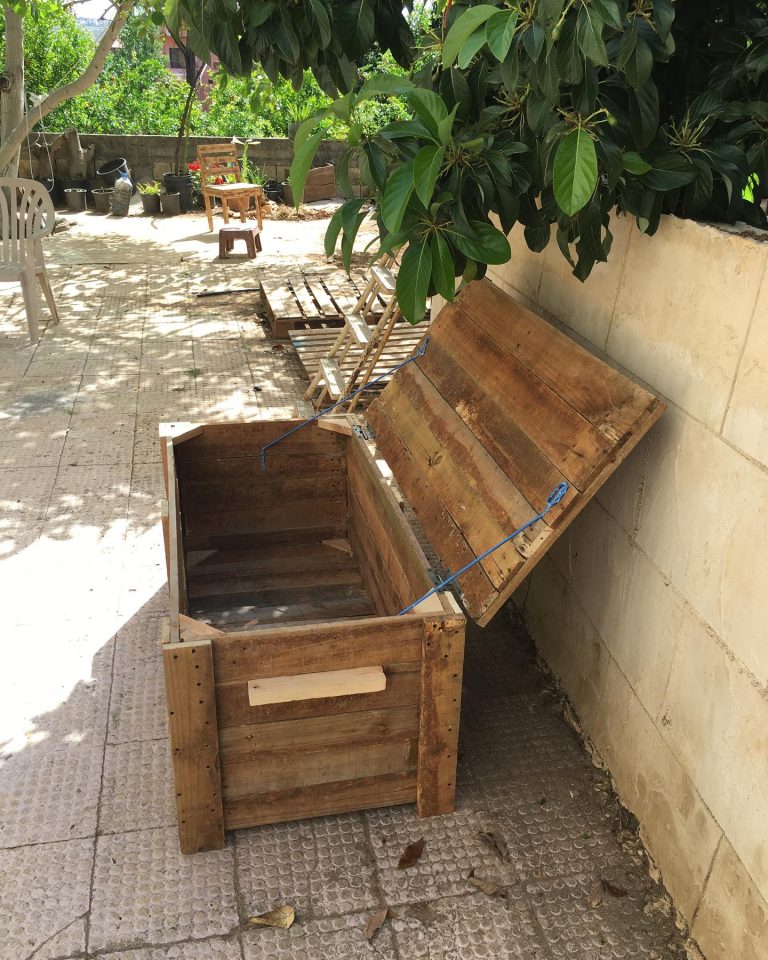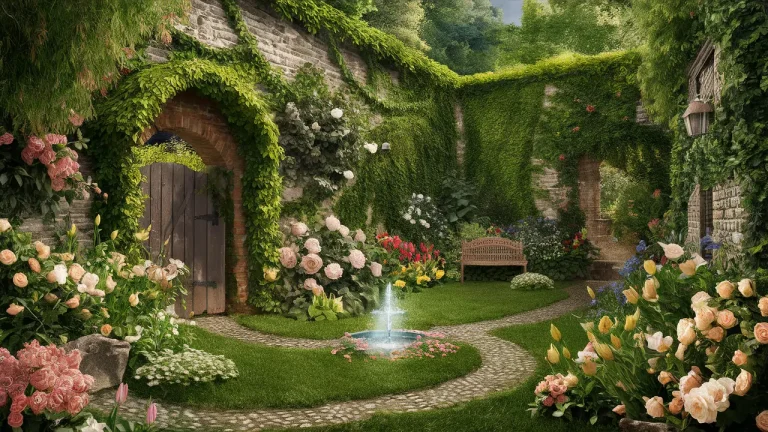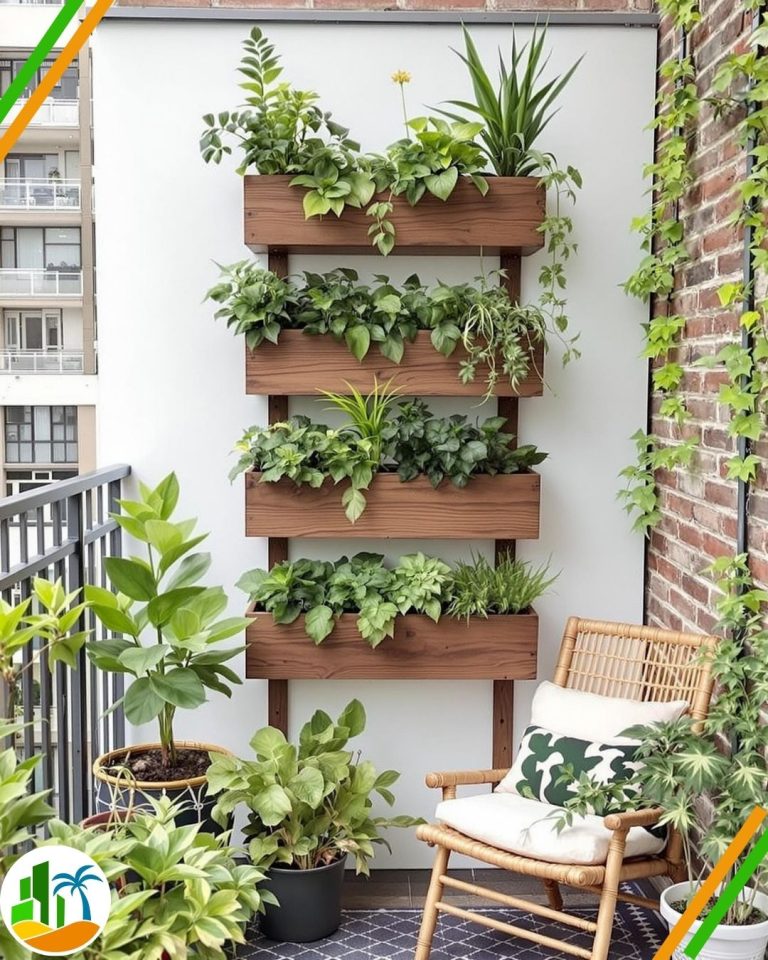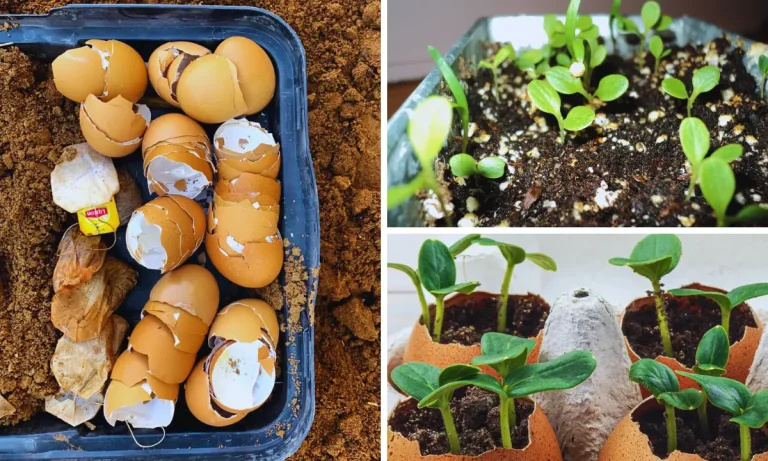23 Shade Garden Design Layout Ideas to Transform Your Outdoor Space
Shade gardens are an incredible way to create a tranquil oasis in your outdoor living area. Whether your backyard is tucked beneath the canopy of large trees or you’re dealing with a more modest shaded corner, there are countless ways to design a stunning and functional garden. If you’re looking to transform your shaded space into a gorgeous retreat, these 23 shade garden layout ideas will help you create the garden of your dreams. From lush green foliage to colorful blooms that thrive in low-light conditions, this list will inspire you to make the most of your shady backyard.
1. Layered Planting for Depth and Texture
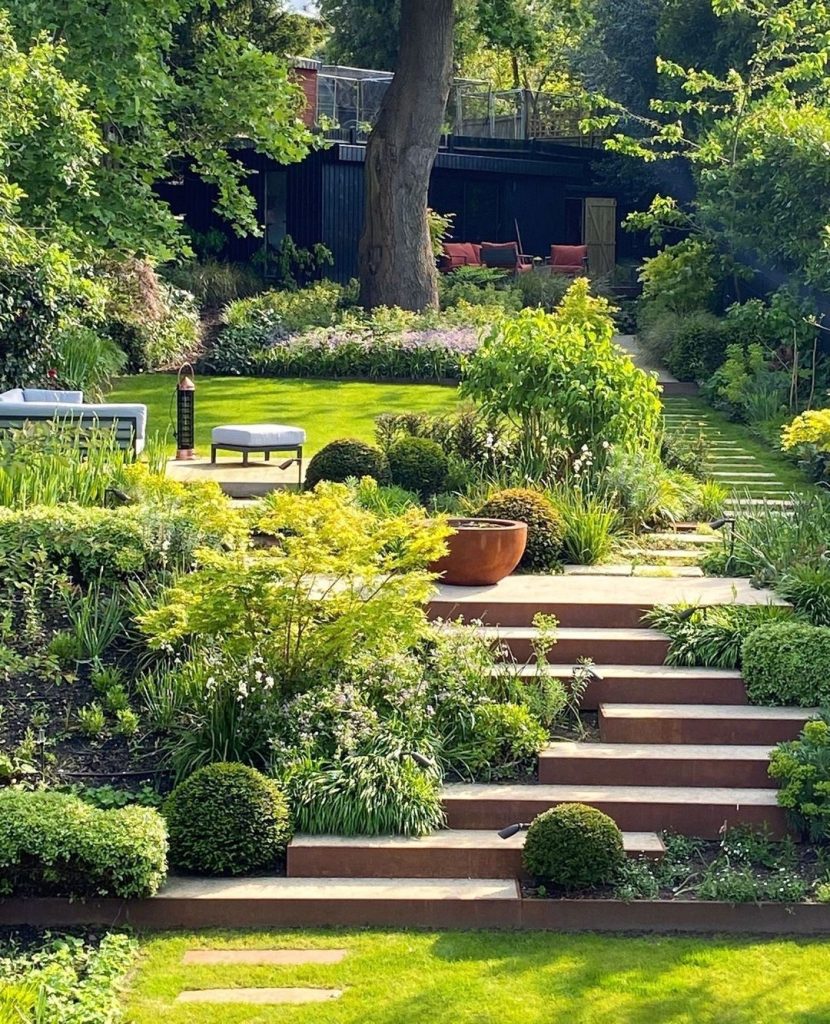
Layering is one of the most effective ways to create depth and interest in a shade garden. Start by placing taller plants in the back, such as ferns or hostas, and gradually work your way down with medium-height plants like astilbes or columbines. Finish the front with low-growing ground covers such as moss or creeping thyme. This layering effect not only helps to maximize space, but it also provides a dynamic look by playing with different textures and colors. Using varying heights creates a sense of fullness, making your garden feel lush and abundant even in shady spots.
Additionally, mixing different types of plants, including flowering varieties like astilbes or hydrangeas, with textured leaves such as those of ferns and hostas, will help to highlight the variety of shapes and colors in your garden. For those who enjoy a more structured garden, keep the plants uniform in terms of height to create a neater, more formal look. Alternatively, a free-flowing, natural look can be achieved by mixing plants of various heights in a more random fashion.
2. Mix of Ferns and Hostas for Lush Greenery
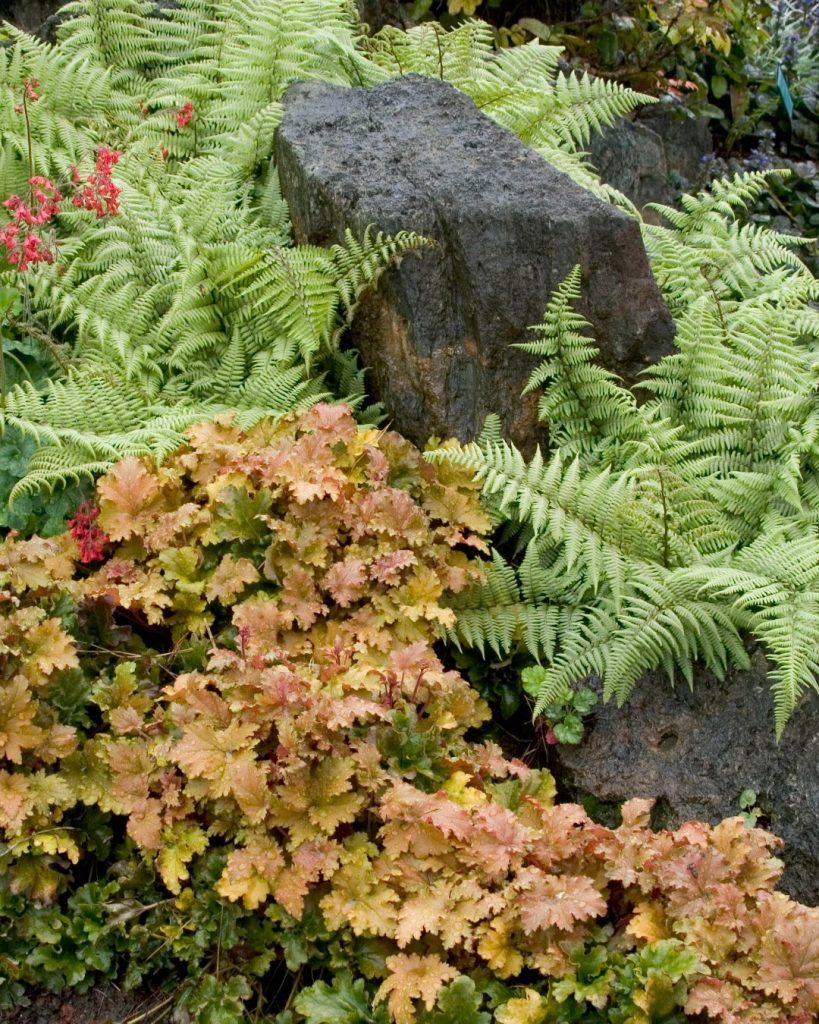
Ferns and hostas are iconic shade-loving plants that bring a lush, vibrant look to your garden. Ferns, such as the Japanese painted fern or ostrich fern, offer elegant, delicate fronds that add movement and texture to any space. Hostas, with their large, broad leaves, can act as a statement piece in your garden. The combination of the two creates a dynamic, green-only palette that still offers plenty of visual interest.
Hostas come in a variety of colors and leaf textures, so you can create contrast with variegated varieties, such as the white-edged hosta or gold-leafed versions. The ferns, on the other hand, can add fine, feathery details that soften the look. This pairing works well in larger shaded areas where you want to create a woodland feel. Consider mixing different types of ferns and hostas in a layered planting design for added depth and texture.
3. Shade-Tolerant Flower Beds for Pops of Color
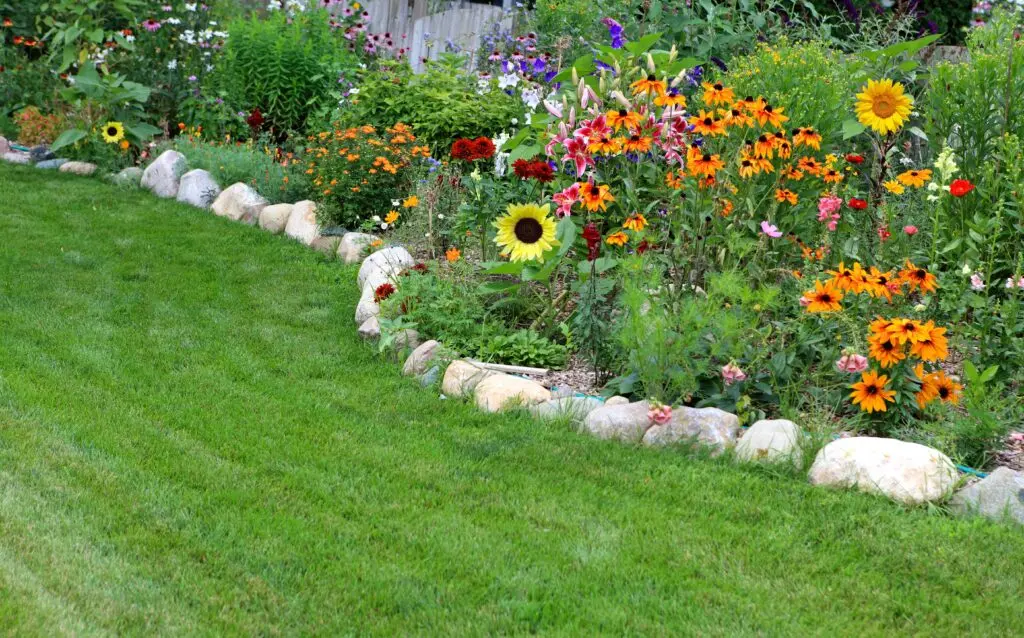
Even though shade gardens may have limited light, there are still plenty of flowers that thrive in these conditions. Some shade-tolerant flowers, like astilbes, columbines, and begonias, can bring stunning pops of color to your space without the harsh sun. Plant them in clusters or scatter them throughout your garden to create bursts of pink, red, purple, or white, adding charm and vibrancy to your shady corner.
The key to creating a balanced look is to mix the flowers with foliage plants such as ferns or hostas. This combination creates a backdrop of greenery while the flowers shine in their spotlight. For a more dramatic effect, plant these flowers in groups based on color, creating cohesive color zones throughout the garden. Be sure to select flowers that are specifically marked as shade-tolerant to ensure they will thrive in your garden’s environment.
4. Create a Woodland Garden with Native Plants
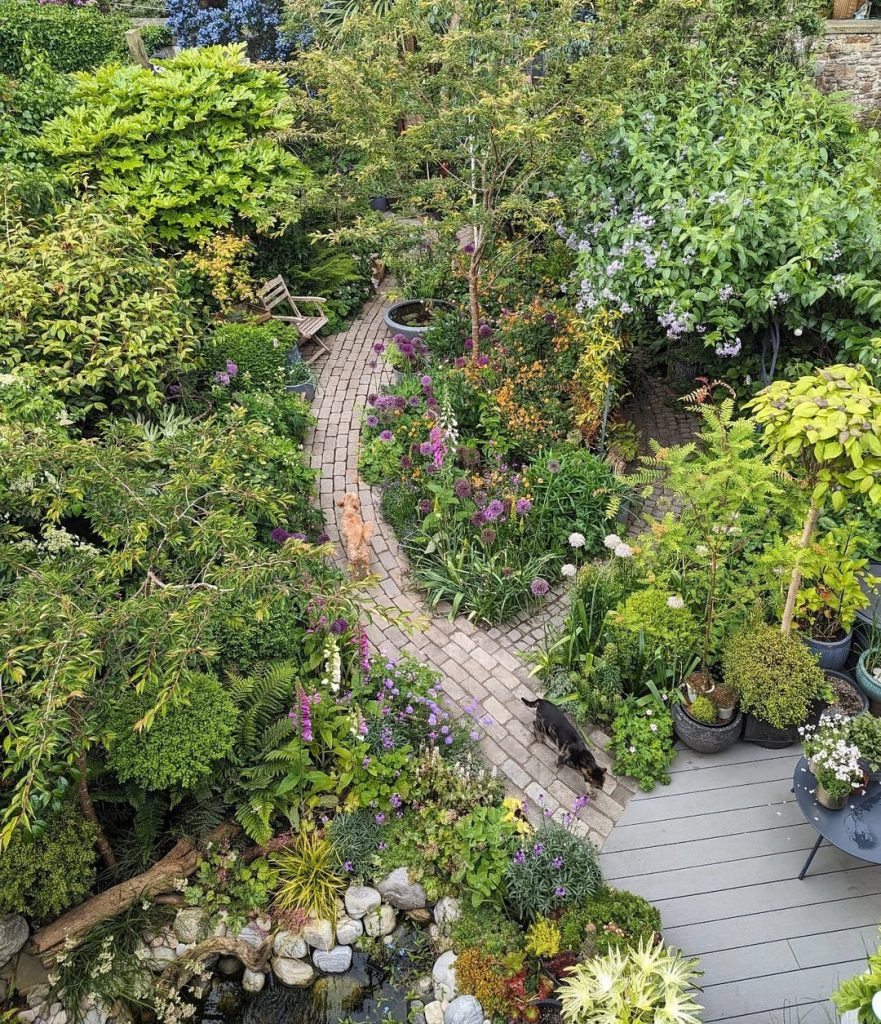
A woodland garden brings the natural beauty of the forest right into your backyard. By using native plants, you can create a space that not only blends in with the environment but also supports local wildlife. Native plants such as trilliums, wild ginger, and mayapples are well-suited for shaded areas and provide a low-maintenance option for creating a naturally beautiful garden.
The advantage of a woodland garden is that it mimics the lush, relaxed atmosphere of a forest, making your outdoor space feel like an extension of nature. You can also incorporate ground covers like moss or ferns, which help to maintain moisture and provide a natural, unstructured look. To complete the look, consider adding a few scattered rocks or tree stumps for added visual interest and to further embrace the natural woodland theme.
5. Garden Pathways for Exploration
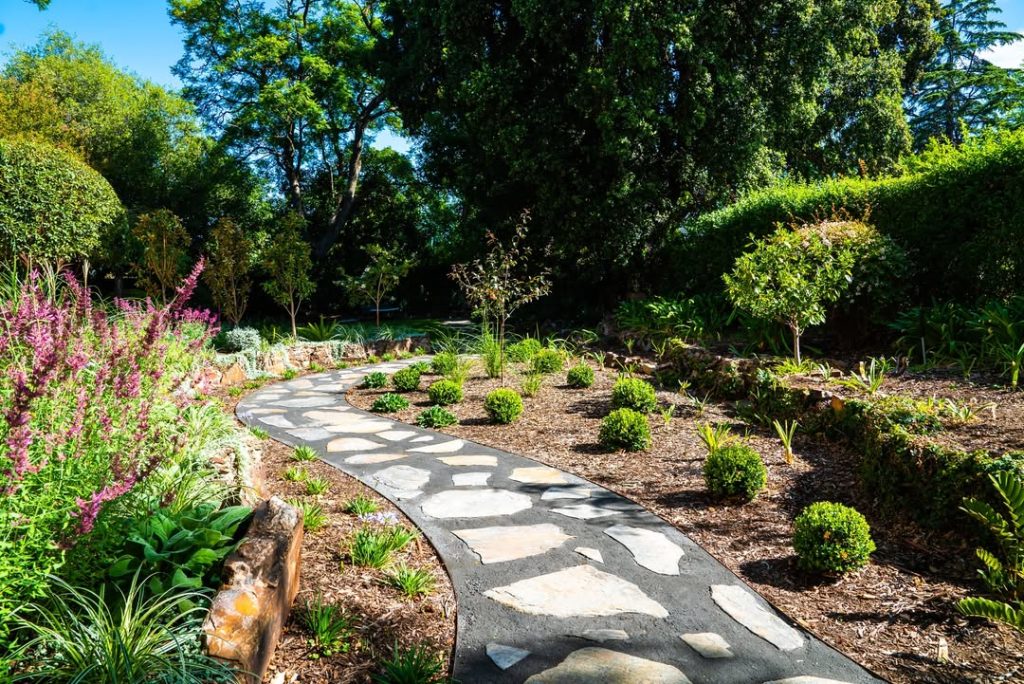
One of the best ways to add both functionality and beauty to your shade garden is by designing winding garden pathways. A well-placed path leads the eye through the space, creating a sense of exploration and adventure. Pathways can be made of gravel, stone, or mulch, depending on the aesthetic you’re trying to achieve.
To highlight the lush greenery of your garden, choose a neutral material like gravel or stepping stones that won’t overwhelm the space. Arrange the path in a winding, organic pattern that mirrors the natural contours of your garden. You can line the path with shade-loving plants such as ferns, ivy, or hostas to further integrate the pathway into the overall design. This design not only looks beautiful but also allows for easy access to different parts of your garden.
6. Vertical Garden Walls for Limited Space
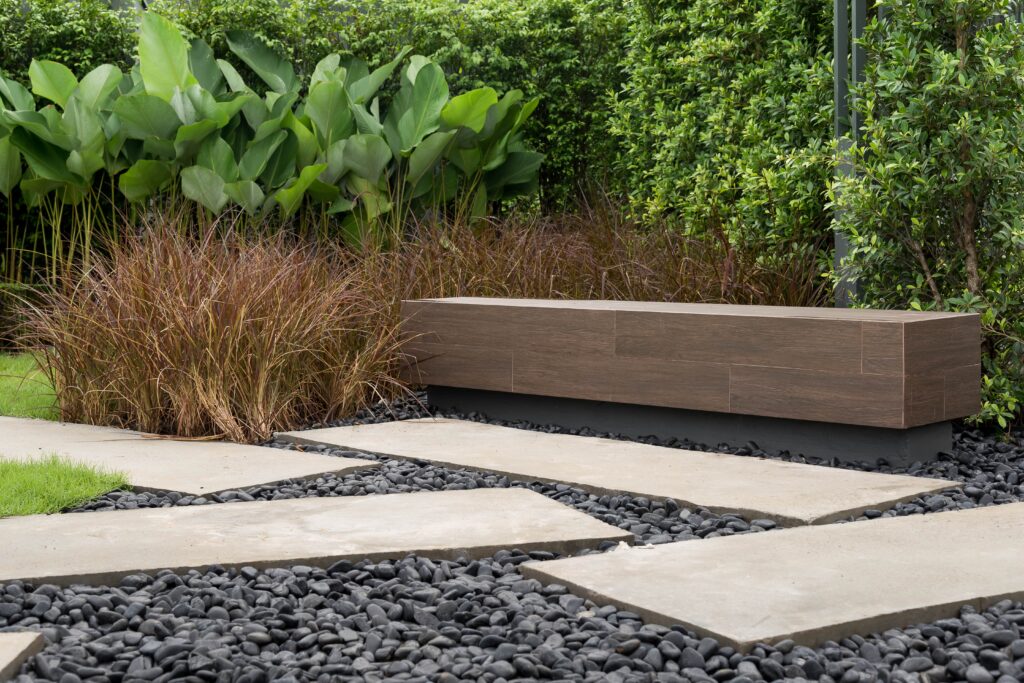
If you’re working with limited space, a vertical garden wall is the perfect solution. Installing trellises or wall-mounted planters allows you to maximize your garden’s potential by creating a vertical garden filled with climbing plants like ivy, sweet autumn clematis, or climbing hydrangeas.
Vertical gardens are ideal for small yards or areas that are predominantly shaded. By growing plants vertically, you free up space on the ground for other uses, like creating seating areas or adding decorative elements. Additionally, climbing plants add an architectural dimension to your garden, creating both visual interest and a natural green wall. Whether you choose a simple trellis or a more elaborate garden structure, vertical gardens are a great way to create a green retreat in a small, shaded space.
7. Water Feature for Soothing Ambience
Source
A water feature, such as a small fountain or pond, can add a sense of tranquility and relaxation to your shade garden. The sound of water gently flowing can create a peaceful, meditative atmosphere, making your garden feel like a true sanctuary.
Consider installing a small fountain in a corner of the garden or creating a pond surrounded by lush, shade-loving plants. The reflective surface of the water will also help to brighten up the darker areas of your garden. To complement the water feature, you can plant water-loving plants like hostas, ferns, or even aquatic plants like water lilies or lotus flowers. These additions will enhance the aesthetic and contribute to the calming ambiance that a water feature provides.
8. Shaded Seating Areas for Relaxation

No shade garden would be complete without a cozy seating area where you can relax and enjoy the beauty of your surroundings. Whether you prefer a bench under a tree or a more elaborate seating arrangement, creating a shaded nook for relaxation adds both comfort and charm to your garden.
Consider using outdoor furniture made of natural materials like wood or wicker, which will blend seamlessly with the surrounding plants. Add cushions or throw blankets for extra comfort, and place the seating in an area where you can enjoy both the shade and the view of your garden. To further enhance the atmosphere, incorporate decorative elements such as lanterns or wind chimes that add both functionality and beauty.
9. Create a Secret Garden with Tall Hedges
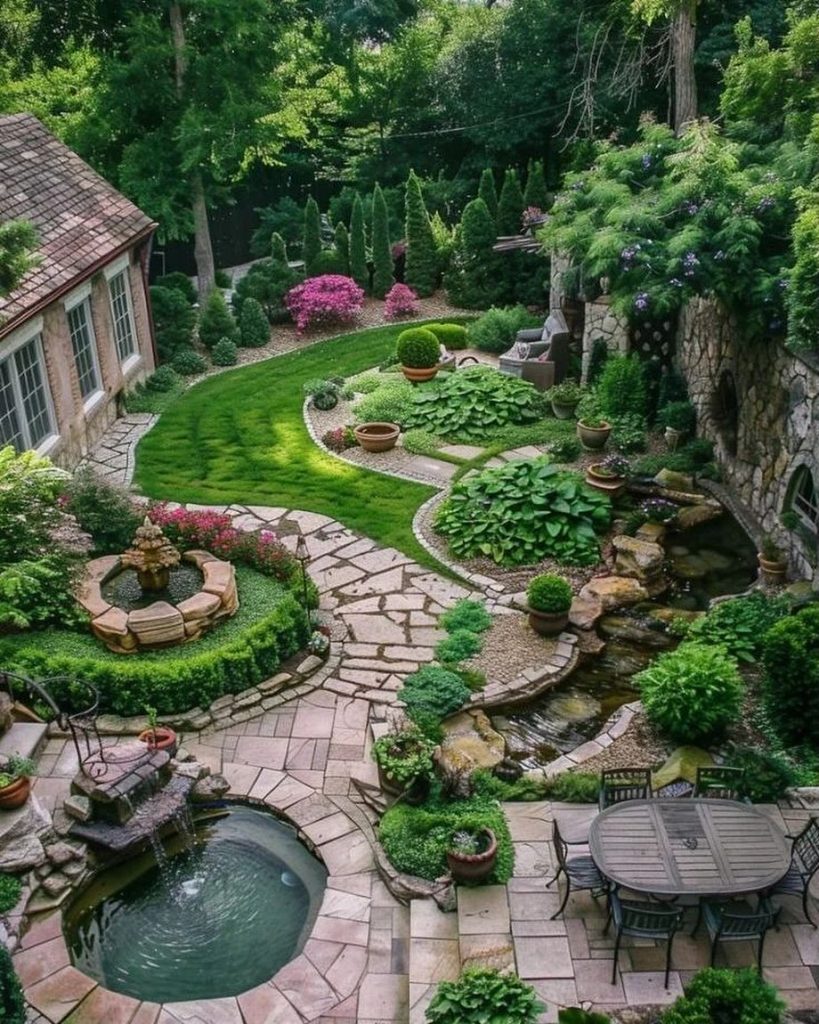
For those seeking privacy or a more intimate garden experience, tall hedges or dense shrubbery can help create a secret garden. This layout design uses plants like boxwood, yew, or holly to form walls or borders that enclose the space, providing a sense of seclusion and privacy.
The enclosed garden will feel like a personal retreat, hidden away from the rest of the world. The hedge walls not only create a physical barrier but also help to define the space, making it feel more organized and intimate. Inside, you can plant a variety of shade-loving plants such as ferns, hydrangeas, or begonias, ensuring the space remains lush and inviting.
10. Incorporate Colorful Containers for Easy Maintenance

If you’re looking for a low-maintenance option that still adds a burst of color to your shade garden, consider using colorful containers for shade-loving plants. Containers filled with flowers such as impatiens, begonias, or lobelias are easy to care for and provide instant color and visual interest.
Choose containers in a variety of shapes and sizes to create a dynamic, layered effect. Position the containers around your garden or along the edges of pathways to add color without taking up too much space. These portable planters also allow you to easily change the look of your garden from season to season, keeping things fresh and exciting without a lot of effort.
11. Design a Zen Garden with Minimalist Touches
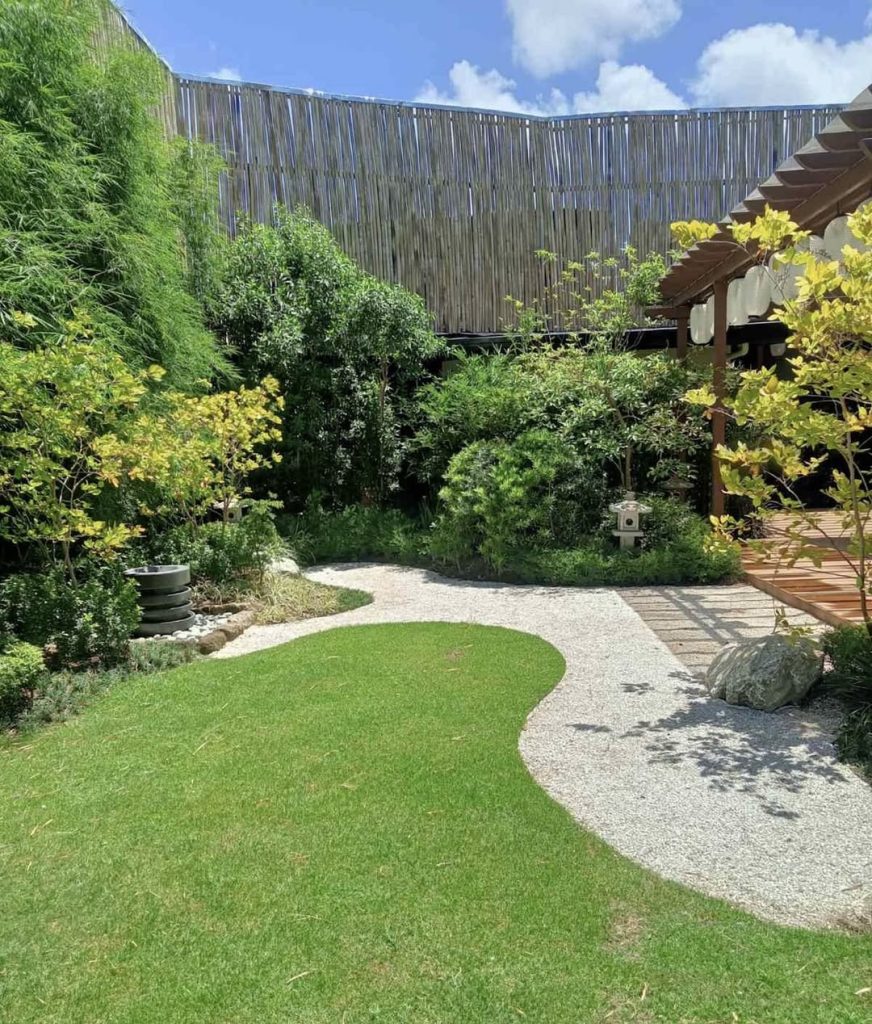
A Zen garden is the perfect design style for a shade garden, especially if you want to create a calming, minimalist space. By using simple elements such as rocks, pebbles, and moss, you can achieve a serene atmosphere that promotes relaxation and mindfulness.
Incorporate smooth stones, bamboo fencing, and carefully placed sculptures to create a Zen-inspired garden. Use small rocks or gravel for the base and create patterns with a rake to symbolize flowing water or wind. Pair these elements with low-maintenance, shade-loving plants such as ferns or moss to keep the Zen aesthetic intact. The goal is to create a space where every element contributes to peace and tranquility.
12. Cottage-Style Garden with Climbing Plants
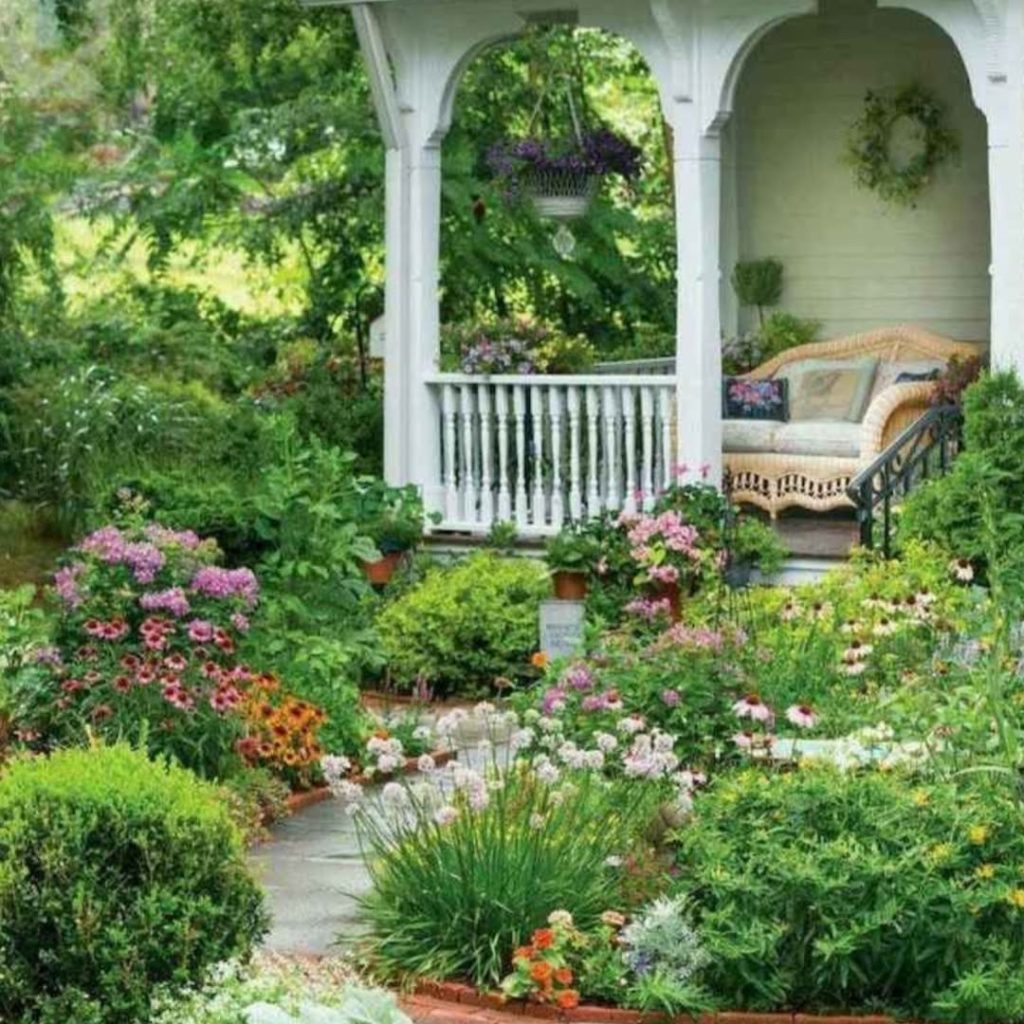
For a whimsical and charming design, embrace the cottage garden style in your shade space. This approach incorporates climbing plants like clematis, roses, or wisteria, which can grow up trellises or walls, filling the garden with vibrant color and fragrance.
The key to creating a cottage-style garden is to mix flowers and plants with informal, flowing arrangements. Allow the plants to grow and spill over each other, creating a lush, untamed look. Combine the climbing plants with ground covers such as thyme or moss to fill in the spaces beneath the taller plants, creating a well-balanced and lush garden design.
13. Moss Garden for a Magical Touch
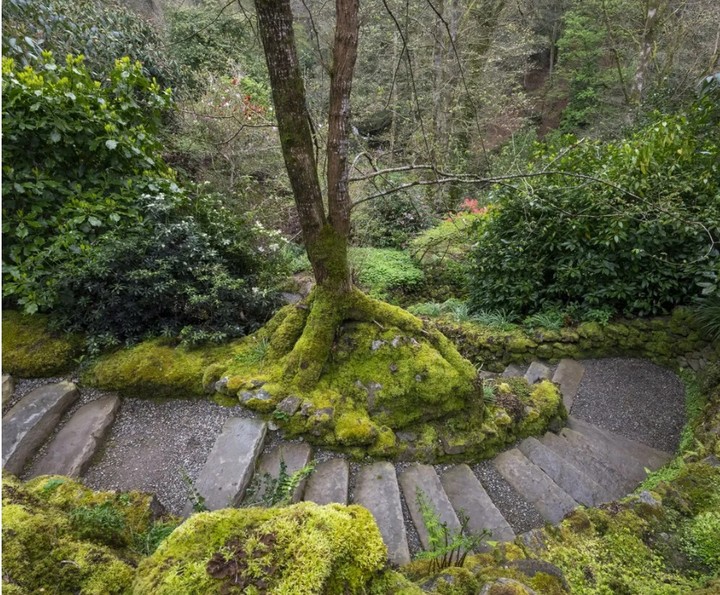
Moss is a unique and enchanting ground cover that thrives in shady conditions. Whether you use it as a carpet across the ground or as a complement to larger plants, moss adds a soft, velvety texture to your garden that feels magical.
Consider creating a dedicated moss garden or adding it around existing plants to create a beautiful contrast. Moss works particularly well between stepping stones or around the bases of trees and shrubs. Its ability to thrive in damp, shaded conditions makes it the perfect ground cover for shaded gardens, and its low-maintenance nature ensures that you don’t have to worry about constant upkeep.
14. Tropical Vibe with Shade-Loving Plants
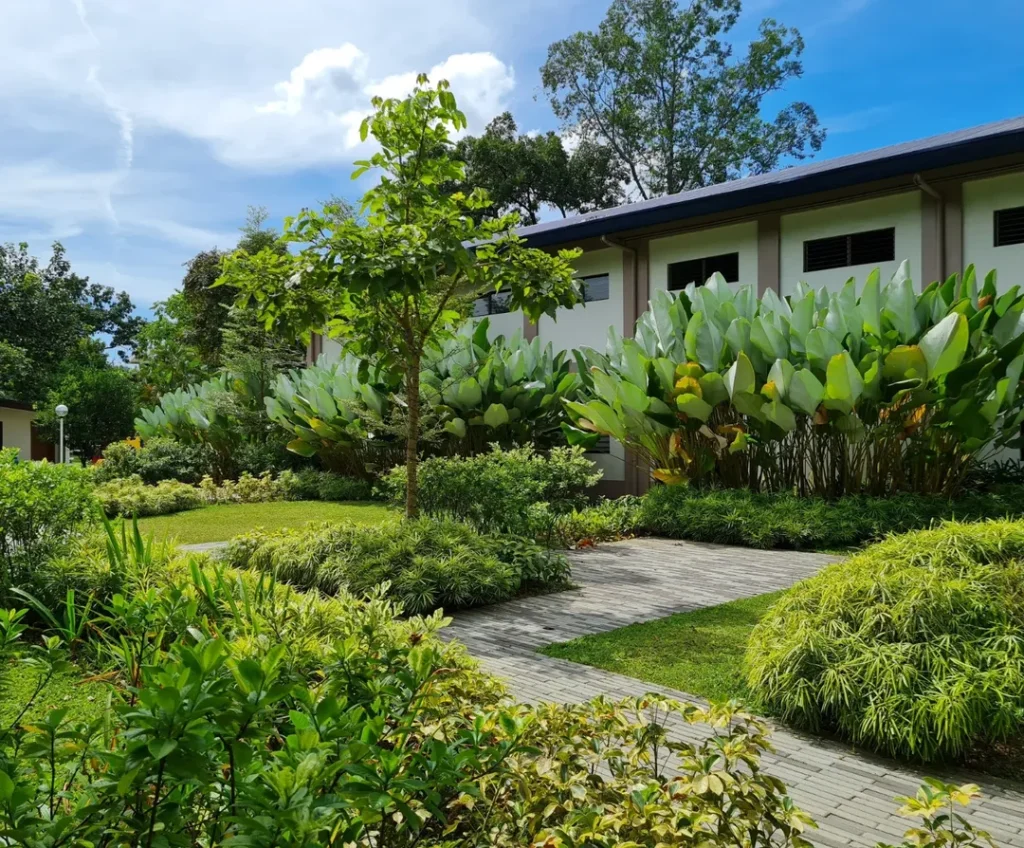
For a more exotic feel in your shade garden, why not incorporate tropical plants that thrive in low light? Varieties such as caladium, elephant ears, and taro are perfect for shaded spaces and bring a lush, tropical vibe to your garden. These plants typically have large, dramatic leaves in bold colors like red, pink, or green, which can make your garden feel like an island retreat.
Mixing tropical plants with ferns, hostas, and even ornamental grasses adds contrast and texture. For additional flair, you can also use bold-colored planters or containers to house these plants, creating an even stronger tropical ambiance. This design works particularly well in larger gardens where you have more room to experiment with various plant types and sizes, transforming your shaded corner into a rich, vibrant escape.
15. Shade Garden with Seasonal Blooms
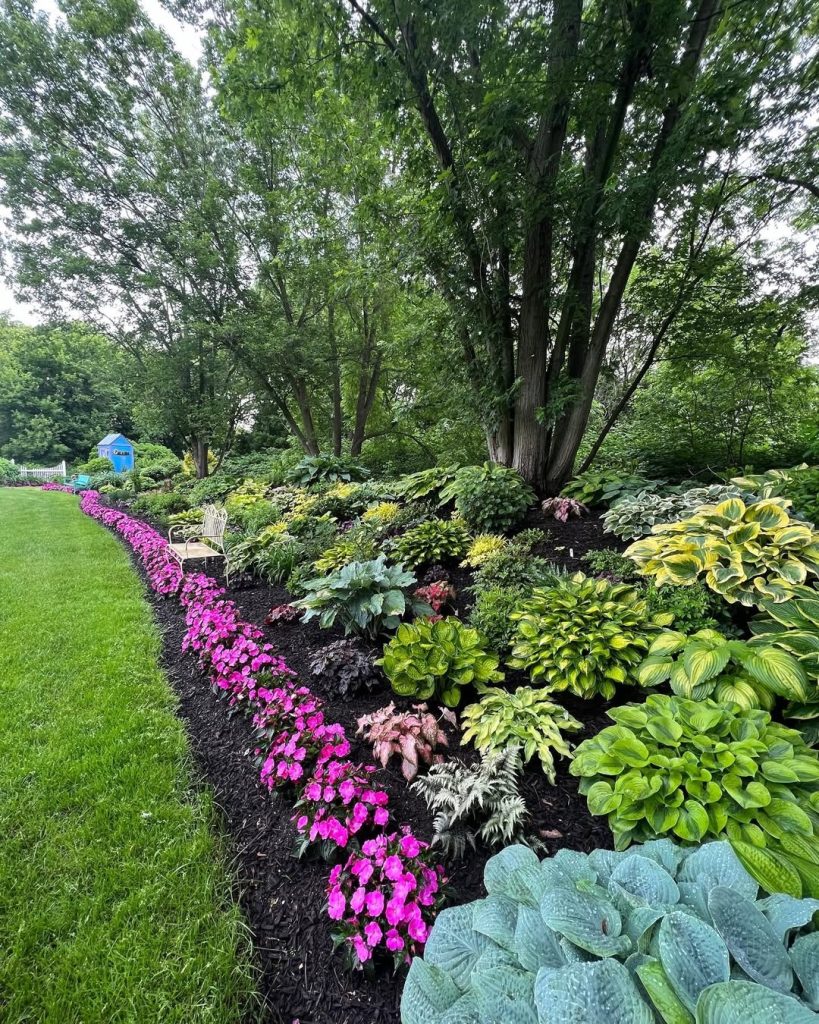
One of the most captivating elements of a shade garden is how it can transform with the seasons. By selecting a variety of shade-tolerant plants that bloom at different times of the year, you can ensure that your garden remains full of color and life throughout the changing seasons.
In spring, consider planting bulbs like daffodils or crocuses that will brighten up your garden. During the summer, add flowers such as astilbes, hostas, or impatiens for consistent color. For fall, consider chrysanthemums or toad lilies to maintain vibrancy in cooler months. This seasonal approach to planting will allow your garden to evolve beautifully throughout the year, ensuring that it’s always a source of enjoyment and beauty.
16. Sunken Garden for Hidden Retreats
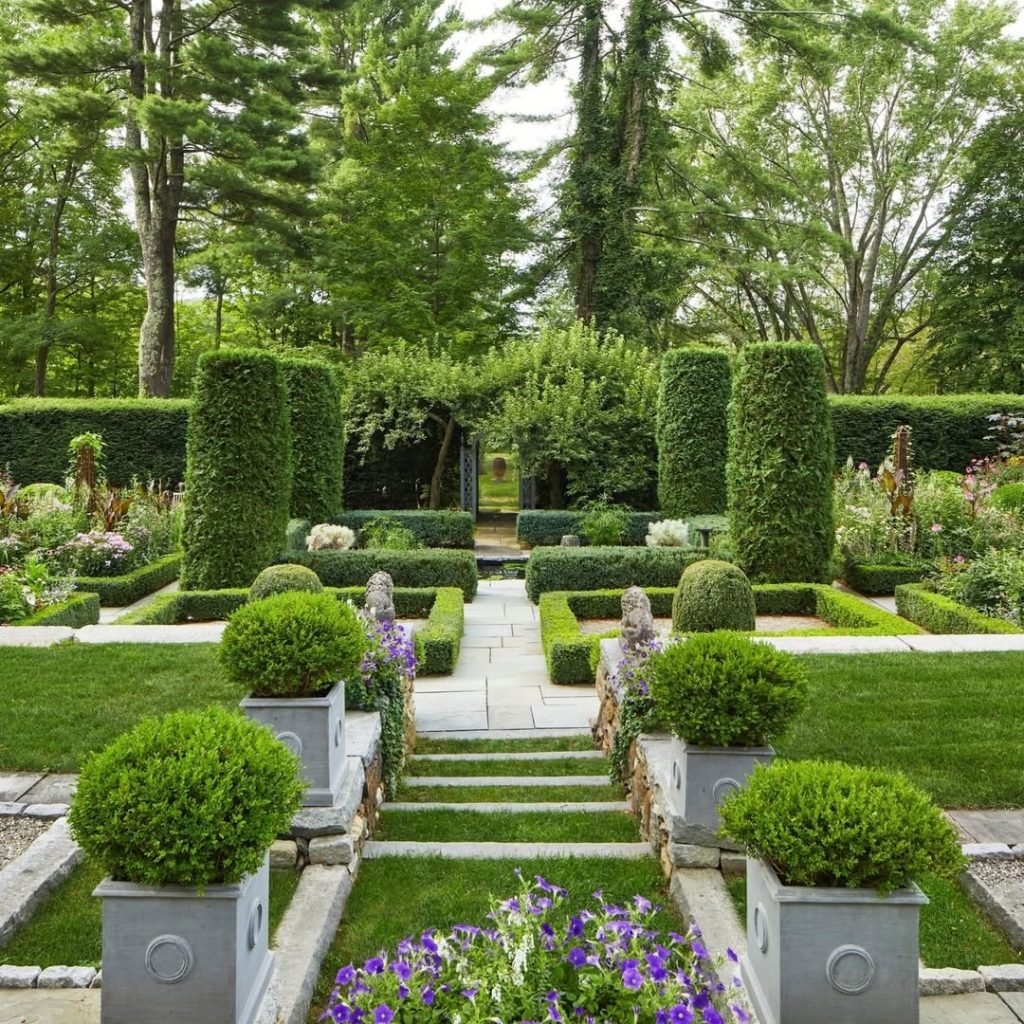
If you have a little more space and want to add a dramatic touch to your shade garden, consider creating a sunken garden. A sunken garden involves lowering the ground level in a designated area, which creates a more intimate, secluded space surrounded by lush plants.
To build a sunken garden in your shaded area, dig a small depression and surround it with stone or brick walls, which can help to define the space. Then, fill the depression with plants that love shaded conditions, such as ferns, hostas, and woodland flowers. The sunken garden concept enhances the sense of privacy and tranquility, making it the perfect location for a quiet reading nook or a peaceful meditation spot.
17. Shaded Pergola with Climbing Vines
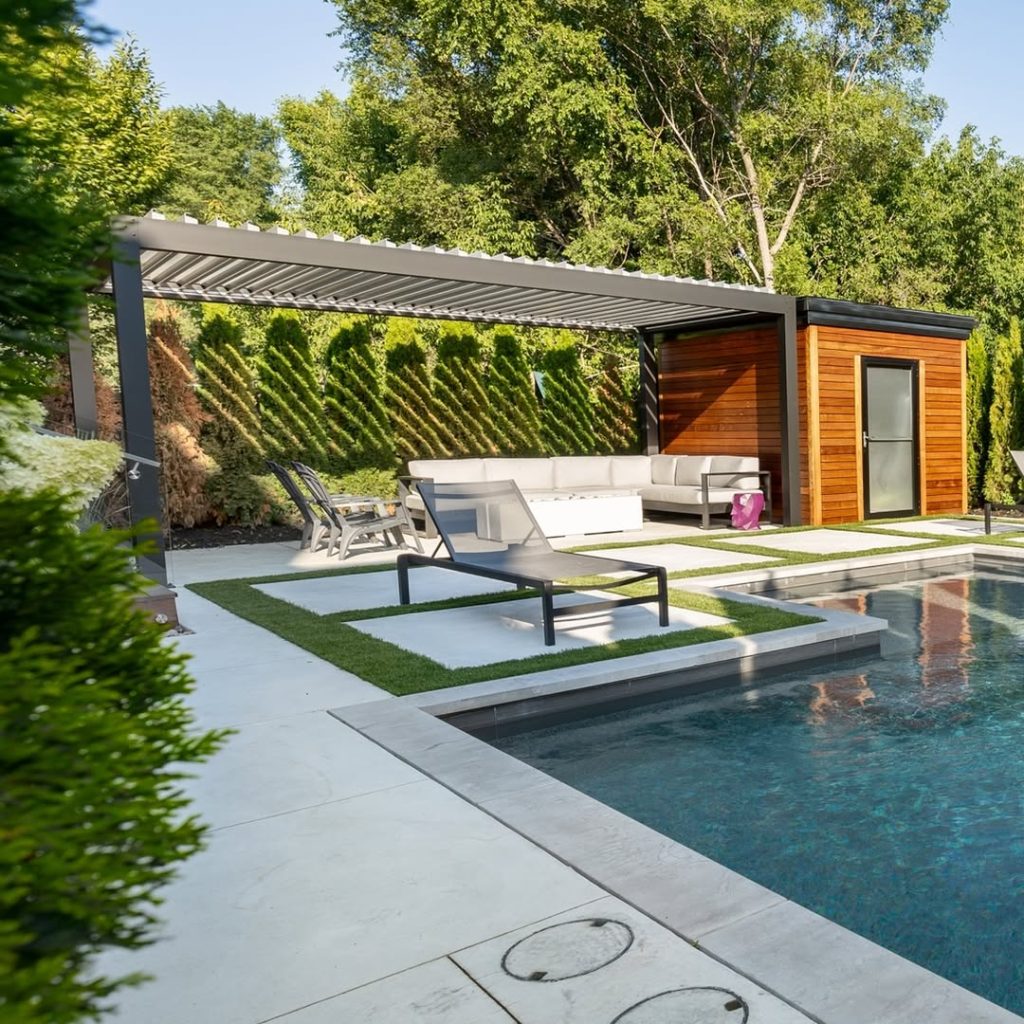
Adding a pergola to your shaded garden can provide both structure and shade. This architectural element can be the centerpiece of your space, giving it a defined focal point. Plant climbing vines such as wisteria, honeysuckle, or climbing roses to cover the pergola, which will add both beauty and fragrance to your shaded garden.
The shade provided by the pergola creates a comfortable environment for outdoor living, while the climbing plants offer natural beauty that will continue to evolve over time. You can add benches or seating underneath the pergola to create a cozy gathering spot for guests or a peaceful retreat for yourself. This design is perfect for anyone looking to combine functionality with aesthetic appeal in their shade garden.
18. Naturalistic Design with Tree Canopy Overhead
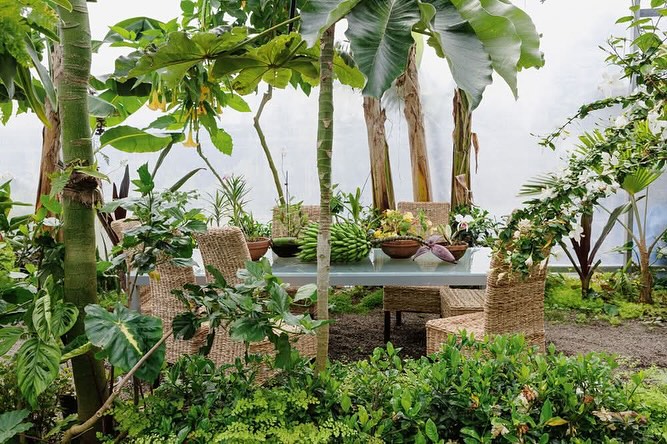
For a truly naturalistic design, let the canopy of your trees guide the layout of your shade garden. By working with the existing trees in your backyard, you can create a garden that blends seamlessly with the natural landscape.
Start by selecting plants that will thrive in the shade of the trees, such as ferns, wildflowers, or even hostas. Incorporate natural elements like rocks, fallen branches, or stumps to add rustic charm to your garden. The key is to create a space that feels like an extension of the surrounding landscape, where everything flows naturally and nothing feels forced. This design works especially well for larger gardens or areas with mature trees.
19. Shade Garden with Sculptural Elements
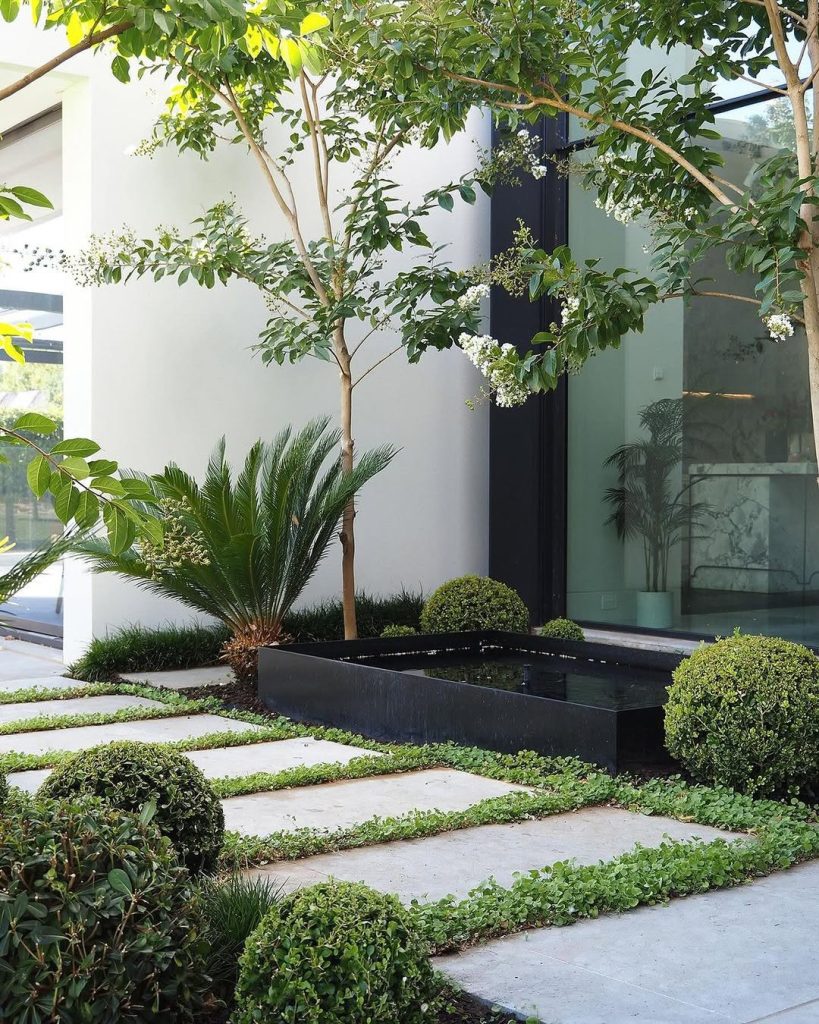
Incorporating sculptural elements into your shade garden can turn it into a true art piece. Whether it’s a beautiful stone statue, a metal garden sculpture, or even a decorative birdbath, these artistic touches can add visual intrigue and personality to your shaded space.
You can place these sculptures as focal points in the center of your garden or scatter them throughout the space for surprise moments of beauty. Sculptural elements also help add vertical interest to a shade garden, which can sometimes feel a bit too horizontal. Combine these artistic touches with lush plants, creating a balanced design that is both artistic and natural.
20. Shady Zen Waterfall Garden
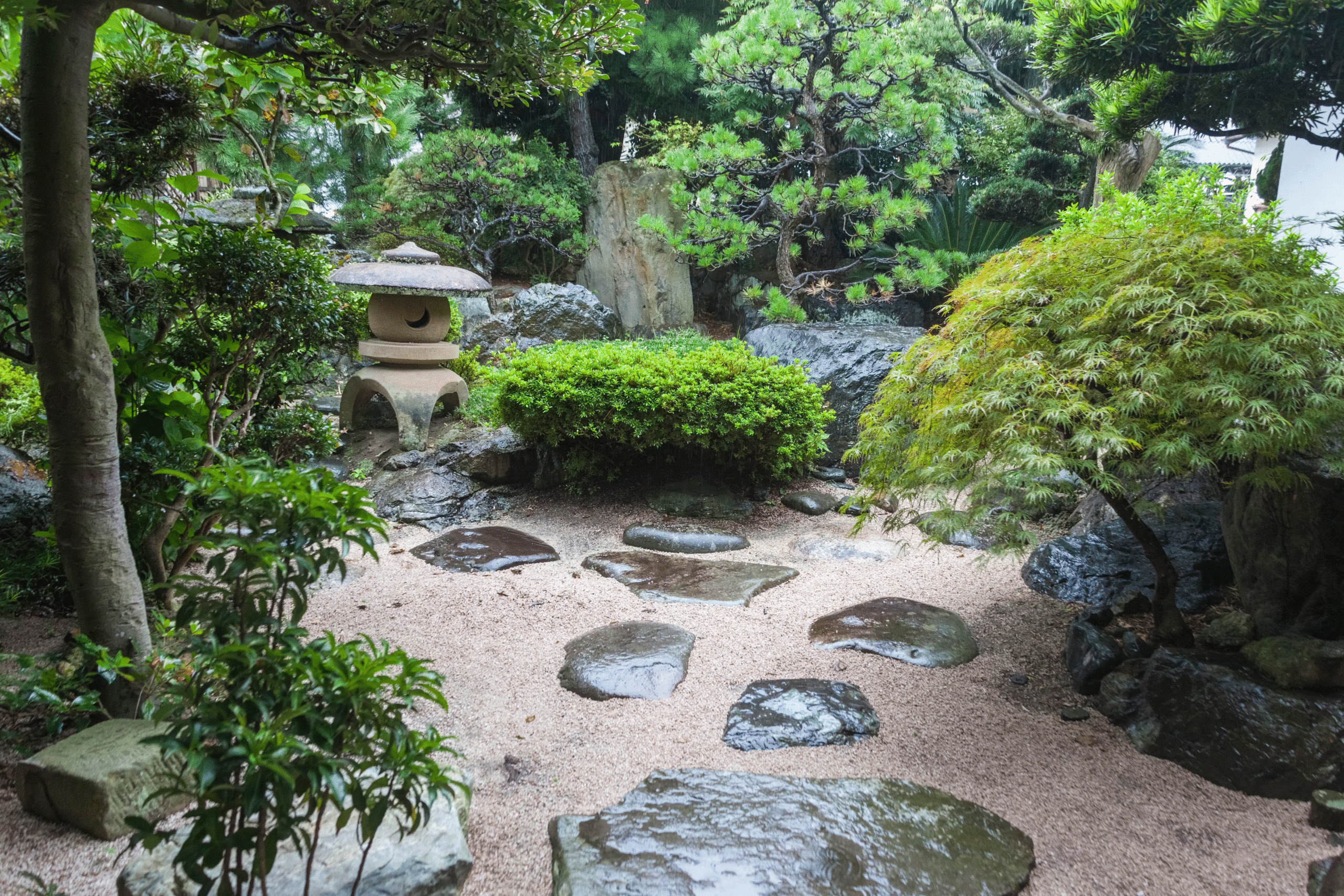
For those looking to create a truly serene and meditative space, a waterfall garden is the perfect addition. A shaded waterfall garden can become the centerpiece of your outdoor retreat, creating both visual appeal and soothing sounds.
Choose a location in your shade garden where a waterfall will naturally flow and consider using natural stone or rock to construct the waterfall. Surround the waterfall with shade-loving plants like ferns, ivy, or hostas to create a lush, green backdrop. The sound of flowing water will provide a tranquil atmosphere, making this type of garden ideal for relaxation, contemplation, or simply enjoying the peacefulness of nature.
21. Shaded Garden with Evergreen Shrubs
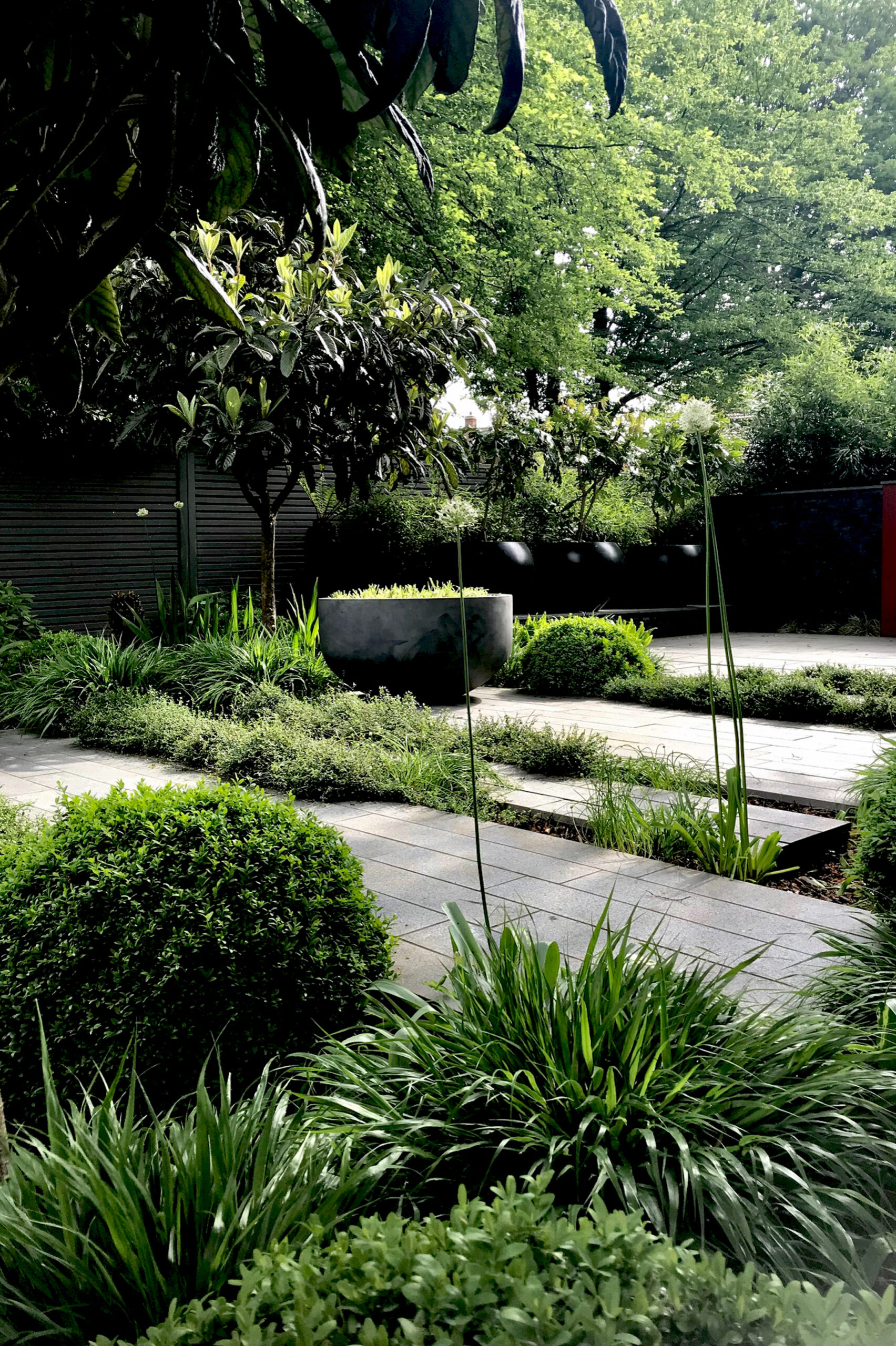
Evergreen shrubs are an excellent way to add year-round structure and greenery to your shade garden. Varieties like boxwood, holly, and yew not only thrive in low-light conditions but also retain their vibrant green color throughout the seasons, giving your garden life even in winter.
These shrubs can be used as a backdrop for flowering plants or can serve as a border to define different sections of the garden. Because they’re low-maintenance, evergreen shrubs are perfect for gardeners who want to create a consistent look with minimal upkeep. Pairing them with ferns or other low-growing plants adds layers of texture and creates a fuller, more dimensional garden.
22. Sunken Fire Pit for Warmth and Ambiance
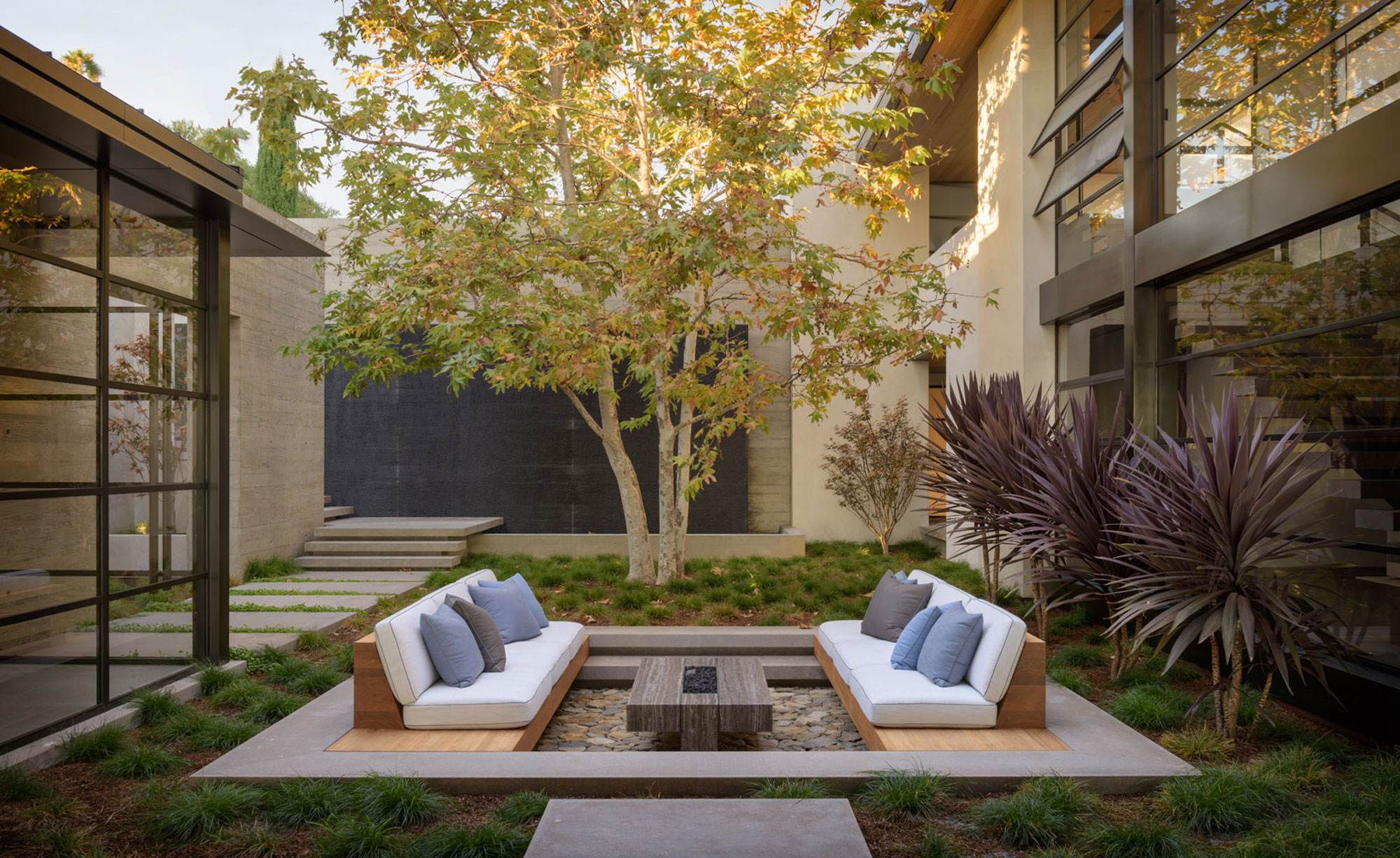
If you want to enjoy your shade garden well into the evening or during cooler months, consider adding a sunken fire pit. A fire pit in the center of your garden creates a cozy and inviting space where you can relax, entertain guests, or simply enjoy the ambiance of a flickering fire.
Surround the fire pit with comfortable seating, such as built-in benches or cushioned chairs, to encourage conversation and relaxation. The sunken nature of the fire pit adds visual depth to the space, making it feel like a secluded, magical spot. Add some string lights or lanterns around the area to enhance the warm, intimate atmosphere.
23. Shady Cottage Garden with Gravel Paths
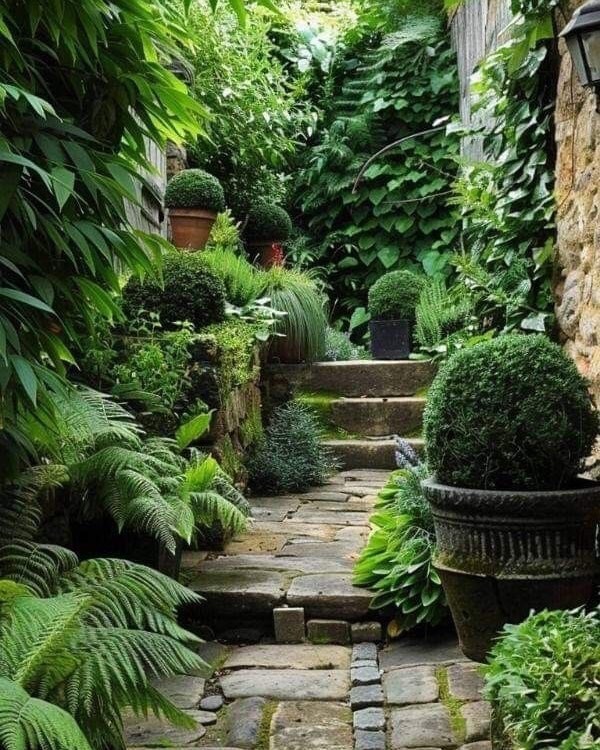
For a classic, cozy look, design your shade garden with a cottage garden style and incorporate gravel paths for a rustic feel. Gravel paths are a low-maintenance option that still adds charm and character to your garden. The paths can meander through a mixture of wildflowers, ferns, and shade-loving plants like primroses and hostas.
The gravel serves as a neutral base that lets the plants shine while offering a contrast in texture. As with any cottage garden, aim for an informal, natural look by allowing the plants to spill over the edges of the gravel paths. This style creates a soft, enchanting atmosphere that feels both welcoming and tranquil.
Conclusion: Bringing Your Shade Garden to Life
Creating a shade garden offers you the chance to transform a darker, overlooked space into a lush, inviting oasis. Whether you’re designing a peaceful retreat, an outdoor entertaining area, or simply a beautiful, green space to unwind, these 23 shade garden design ideas will inspire you to get creative and make the most of your shaded backyard.
From layering plants for texture and depth to incorporating soothing water features or cozy seating areas, there are countless ways to personalize your shade garden. Remember, the key to a successful shade garden is selecting plants that thrive in lower light conditions and creating a layout that feels natural, comfortable, and tailored to your personal style.
Take these ideas and experiment with different elements to design a shade garden that not only fits your space but also brings beauty, tranquility, and enjoyment year-round. Happy gardening!

